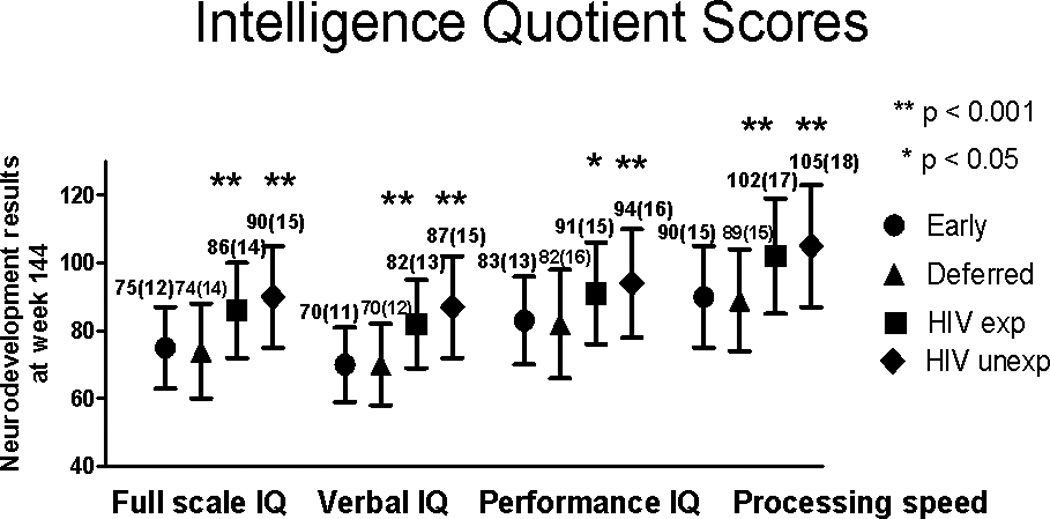Figure 2.

Intelligence quotient (IQ) comparison between the HIV-infected children (early vs. deferred antiretroviral therapy arms) at week 144 of PREDICT and the HIV-uninfected (HIV-exposed and –unexposed) control group children.
Footnote: Mean (standard deviation) scores are shown. P values for the comparison between PREDICT children and the uninfected HIV-exposed and HIV-unexposed controls have been adjusted for parent as caregiver, educational level of caregiver and income.
The intelligence quotient (IQ) tests included Wechsler Intelligence Scale for Children (WISC)-III (age 6 to 17 years) or the Wechsler Preschool and Primary Scale of Intelligence (WPPSI)-III (age 2 to 7.25 years).
The number of children in each group: HIV-infected/early antiretroviral therapy arm (n=79), HIV-infected/deferred antiretroviral therapy arm (n=82), HIV-uninfected/exposed (n=93) and HIV-uninfected/unexposed (n=103).
P value represents significant differences between each of the HIV-uninfected groups relative to the combined early and deferred groups.
